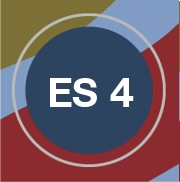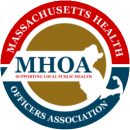
ES 4. Strengthen, support, and mobilize communities and partnerships
Core Function: Policy Development
Why This Is Important
- Developing collaborations across diverse community partners helps to ensure that the community resources needed to support prevention efforts are available and that the community fully embraces selected prevention and service approaches.
- Connecting with individuals who reflect the target community is more likely to produce prevention and support services that meet the community’s genuine needs, build on its strengths, address historical factors influencing SUD/OUD and related problems, and produce positive outcomes.
- Lack of coordination and communication between the different sectors tasked with responding to opioid misuse and overdose (e.g., healthcare, public safety, schools, criminal justice, harm reduction services, human services, housing, and public health) leads to too many missed opportunities for wrap-around services and connections to care.
What’s Involved
- Convene and facilitate partnerships and strategic alliances among other municipal agencies, community-based organizations, and community members in order to develop and implement prevention, intervention, and treatment activities for OUD/SUD. Sectors to consider include:
| Treatment providers | Health care providers |
| Local businesses | Neighborhood and cultural associations |
| Law enforcement | Local government |
| University and research institutions | Faith communities |
| Youth-serving agencies and institutions | Harm reduction specialists and SSP staff |
You can find a list of community-based organizations that do substance misuse prevention work here.
- Engage partners in a strategic planning process to guide the implementation of program efforts.
- Ensure that partnerships include representation from sub-populations that have been traditionally marginalized.
- Raise public awareness of priority substance misuse needs to garner valuable resources and increase local readiness to support substance use-related initiatives.
Key Considerations
- Partner engagement should be a planned and proactive endeavor. When seeking to engage potential partners:
- Consider the level of involvement needed. If a potential partner is not yet ready to become deeply involved in your work, meet them where they are; you can slowly encourage them to become more involved over time.
- Do your homework. When developing relationships with different partners, strive to understand their experience within the community. How have they engaged with other partners in the past? What was that experience like? Were they treated as valued and full partners? Did they experience disenfranchisement? With which other community partners do they traditionally work?
- Be proactive. Don’t expect partners to come to you. Meet one-on-one with public opinion leaders that represent the diversity of your community. Attend community meetings hosted by partners who are also engaged in substance use-related initiatives or who provide related services, and share information on their websites and social media outlets.
- Reach out to influencers—but don’t rely on their voices, entirely. A parent who is an active and beloved member of their school, church, or community center can be important allies in your work. But make sure to also cultivate relationships with people are less publicly prominent but who may nonetheless have rich experiences to share.
Get Started!
- Provide training on the basics of collaboration. Understanding some basic principles of collaboration can help health departments develop the relationships needed to plan, implement, evaluate, and sustain prevention efforts, and to deepen these relationships over time.
- Convene a planning group. Include those stakeholders most critical to intervention success. So, for example, if you decide to implement a post-overdose program, make sure to include representation from the harm reduction community, local behavioral health agencies, and potentially law enforcement (depending on the model you choose). If you decide to focus on prescriber education, include representation from the medical community.
- Choose a planning model. Several public health-related planning models are used in substance misuse prevention. One of the best known is SAMHSA’s Strategic Prevention Framework (SPF). Developed more than two decades ago, this five-step framework has been used to guide prevention efforts in all 50 states and hundreds of communities. All BSAS-funded programs are required to carry out a detailed planning process using SAMHSA’s SPF.
- Engage in a collaborative planning process. Collaborative teams need strong leaders who are comfortable juggling the needs of multiple stakeholders while also ensuring that the work of the team continues to move forward. Think through how your group will function, how decisions will be made, and what partners need to know—about the project and one another—to be productive and stay engaged. Consider inviting an outside facilitator to help guide the planning process.
- Spread the word. Meet one-on-one with public opinion leaders to let them know about the work you’re doing (and later, about what you learned). Host community events and attend community meetings hosted by others. Ongoing communication is important for transparency; it will also help to create the buy-in needed to sustain your program efforts.
Collaboration in Action: Cambridge’s Opioid Action Plan
In 2019, the Cambridge City Manager’s Opioid Working Group released a comprehensive plan for addressing and curbing the opioid epidemic in the City of Cambridge. Addressing the Overdose Epidemic in Cambridge: Final Report and Recommendations was the product of a 6-month strategic planning process involving representatives from city agencies, nonprofit and human service organizations, medical and behavioral health organizations, emergency services, and the community. Each of these individuals had been integral to addressing Cambridge’s opioid crisis and demonstrated the depth, breadth, and complexity of establishing and building a successful response.
Over a six-month period in 2018, the working group met 10 times, immersing itself in learning more about the opioid crisis locally; identifying services and programs currently in place; discussing relevant data collection to better inform the work; and hearing from a range of content experts and people with lived experience. Together, group members identified gaps in services and programs, how best to address those gaps, and how to build upon existing programs and services. Five common themes surfaced from these conversations:
- Improved Coordination – Better coordination among partners and existing initiatives
- Service Capacity – Greater capacity to address the challenges and gaps in services
- Operational Support – Increased funding to support the work
- Citywide Campaign – Enhanced anti-stigma education and awareness
- Access to Narcan – Greater access to and awareness of naloxone
Based on this process, the working group identified five broad, high-level
recommendations with immediate and longer-term action steps designed to mitigate the challenges of the opioid crisis in Cambridge. These recommendations can also serve as a blueprint for how Cambridge can respond to other substance use disorder crises in the future. The recommendation development process and the stakeholders involved provided a thoughtful, strategic path forward for tackling addiction and other related issues.
